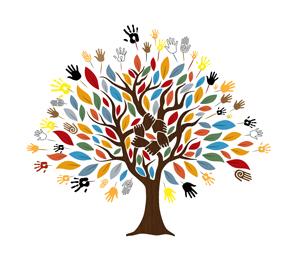The tally of Ottawa-Gatineau’s homicides crept up slightly from 15 in 2021 to 18 last year, with stabbings and second-degree murder charges dominating. The Ottawa Police Service (OPS) crime status report for 2022 will be released in July this year. However, the OPS report released in July 2022 shows an 8% increase in reported Criminal Code of Canada Offences.
The increasing crime rate in Ottawa shows that considering Ottawa as one of the safest cities in Canada may not be not looking at the whole picture. We need to look deeper into the crime pattern, locations and the community safety lessons we have learned over the years.
The 2022 fatal shootings that mainly occurred in neighbourhoods such as Lowertown, Richie and Ledbury-Banff are just the tip of the iceberg. Mapping the overall crime rate in Ottawa will give us the same picture of crime concentration in the most vulnerable neighbourhoods.
The impact of the pandemic, rising inflation and the societal trend of increasing gun violence in North American Cities could be some of the contributing factors for the increased gun violence in Ottawa.
However, in depth research ties crime and concentrated gun violence to neighbourhood inequity which is the result of structural inequalities: policies, social structures and norms set by the institutions in power that prevent individuals living in disadvantaged neighbourhoods from gaining equal access to opportunity. However, to address the root causes, crime prevention and community development professionals must keep the following in mind while planning their response.
Inequity and Crime
Structural inequalities often perpetuate the root causes of crime and gun violence. The inequitable social and economic status of some neighbourhoods leads to segregation of the most vulnerable among us in the most vulnerable areas in the City, which finally tracks race and systemic discrimination. Factors such as pandemics, inflation, and other trends make it worse.
Data shows that the neighbourhoods experiencing disproportionate crime and gun violence in Ottawa are the most inequitable neighbourhoods. All these neighbourhoods have large, low-income, segregated Black and racialized communities with a history of several quality-of-life issues.
The historical context of inequity
The inequity and disparity these neighbourhoods face didn’t happen coincidently by nature. It is by design. Years ago, when the City Council approved these housing projects as affordable housing for the low-income population, it was all with good intentions. Little did the Council know that these communities would emerge as the most vulnerable, segregated neighbourhood that would shape the future of thousands of children living there. Research confirms that where children live matters deeply in whether they prosper as adults.
Neighbourhood inequity Vs Community Safety
Research shows that crime and violence logically follow inequity in disadvantaged neighbourhoods. Violence begets more violence. Youth who are victims of violence and do not sufficiently recover are more likely to commit violence themselves. Gun violence is also strongly correlated with poverty, inequality and growing up in disadvantaged neighbourhoods, just like the other issues of poor health, school readiness, low academic achievement and youth unemployment.
Effective Community Safety Plans
It means programs designed in isolation from addressing quality of life issues originating due to inequity in marginalized neighbourhoods do not lead to deeper and lasting impact.
For impactful and lasting gang and violence prevention, we need to go beyond the band-aide solutions – with limited focus on one or another vulnerable demographic or issue – to integrated place-based solutions that go hand in hand with addressing the underlying social and economic inequalities that fuel crime and gun violence.
For instance, for children and youth programming to succeed, quality of life must improve in the neighbourhoods with the lowest equity score.
Communities need to be supported through community cohesion, safety and well-being interventions to build communities’ resilience – both for day-to-day life as well as crisis situations or natural disasters.
Social service agencies need to offer sustainable and consistent support for community cohesion, safety, youth employment and building community resilience to buffer children and seniors from the toxic stress in high-risk neighbourhoods. Community resilience will pave the way for place-based crime prevention work.
Learning from the past
Ottawa Police Service, working in close partnership with Ottawa Community Housing and other service providers, has successfully implemented community-oriented gang and violence prevention initiatives in vulnerable neighbourhoods. The focus was on hot spots policing, altering the emphasis from mere offenders to social development in the places and contexts where crime occurs.
The No Community Left Behind (NCLB) was the most successful crime prevention initiative in Ottawa South. OPS and partners focused on building community resilience and making neighbourhoods less attractive for offenders to commit a crime. This initiative made offending riskier, less rewarding, more difficult, less excusable and gang activities less ‘cool’ for the youth.
The NCLB was successfully tailor-made for other at-risk areas in the City, such as Lower Town Our Home in Lowertown, Together for Vanier in Vanier and United Neighbours in the West end.
What has changed
Place-based crime prevention to neighbouhood equity-building measures require:
1) a broader framework and 2) sustainable support to remain active.
The broader framework requires at least three key partners to work closely together: OPS, the City of Ottawa and funders/social service agencies committed to addressing inequity.
Historically, the community safety work in Ottawa had a few key elements missing that could complete the triangle between the three entities.
Over the years, the missing elements of the broader framework have now been in place in the form of the Community Development Framework for broader coordination and being an interface between the grassroots work and system-level support; the OPS Neighbourhood Resource Teams, City’s new Integrated Neighbourhood Service Team, the Ottawa Neighbourhood Study, the Neighbourhood Equity Index and the capacity building, and other supports provided by United Way East Ontario.
What is missing
The critical element that lost our attention over time is the coordination, convening and engagement role played by front-line agencies through community developers fully dedicated to mobilising the affected communities, linking them to social service and law enforcement partners and helping residents conduct safety audits and develop community action plans.
Resources for coordination and community mobilisation dwindled over the years and the anticipated expansion of local steering tables didn’t happen as expected. Things have stalled without the critical social engagement work that paved the way for OPS and other social development partners to reach out to the communities and build bridges.
The system-level elements alone failed to make as deeper an impact as anticipated in the absence of serious investment in community coordination and mobilisation.
Due to the reduced investment in dedicated front-line staff for coordination, communities could have responded more effectively. The inside-out elements are lost in the process, and key stakeholders need help coordinating and integrating various pieces of their work for budling on each other strengths for maximum impact.
Opportunity: Community Safety and Well-Being Plan
The Ontario Police Act-mandated Community Safety and Well-Being plan is an excellent opportunity for Ottawa to highlight and focus on the link between the issue of neighbourhood inequity and community safety.
Serious consideration of the link between neighbourhood inequity and community safety will ensure sustainable investment in front-line work for community engagement and consistent planning and programming – including creating employment/education opportunities for youth and focus on prevention and intervention from inequity perspective. This is a must because as long as we have these segregated, disadvantaged and least equitable neighbourhoods, we have to offer place-based social development and equity building support – along with continuing system level efforts to address systemic discrimination and resulting inequities – that will lead to community safety as one of the other positive outcomes.
______
Abid Jan is a community safety and well being professional in Ottawa. The views presented here are his own. He is a long-time community safety and well being professional reachable at jan.abid@outlook.com
Disclaimer: The ideas, views and opinions expressed in this LinkedIn posts and profiles represent author’s own views and not those of any of his current or previous employer or LinkedIn. Also, any and all comments on his posts from respondents/commenters to these postings belong to, and only to, the responder posting the comment(s). The author is not responsible or liable for any such comments.


